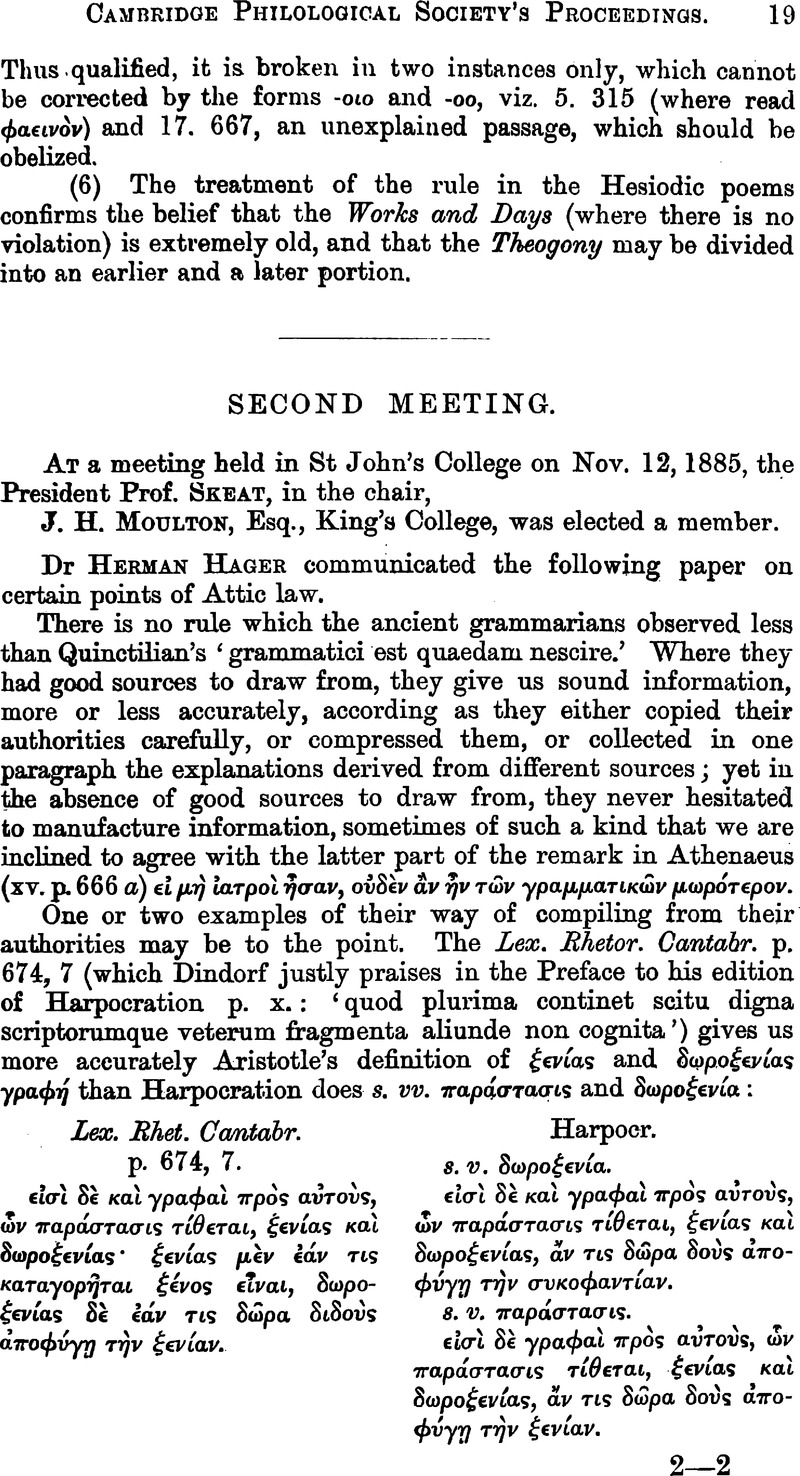No CrossRef data available.
Published online by Cambridge University Press: 02 April 2015

page 20 note 1 Meursi, Joh. Areopagus (1624) cp. 2Google Scholar: senatus Areopagiticus sacrificum legebat, cui commissa Eumenidum sacra.— Müller, O., Aeschyl. Eumen. p. 179 Google Scholar: der Staat hielt den Cult der Semnä so hoch in Ehren, dass er besondre Opferbesorger, Hieropöen, dafür bestimmt hatte, welche der Areopag, als Vorsteher dieses Gottesdienstes, aus dem Athenischen Volke ernannte.-— Schoemann, , Antiqu. juris publ. Graecor. p. 301 Google Scholar: sacerdotes etiam Eumenidum ab Areopago constituebantur.— Hermann, K. Fr., Gottesdienstliche Alterth. S. 11, 12 Google ScholarPubMed quotes O. Müller.— Philippi, , d. Areopag und d. Epheten, p.155 Google Scholar: ein Zeugniss erwähnt die Wahl der Opferbesteller (seitens des Areopags).
page 21 note 1 Cf. Mommsen, , Heortologie, p. 171 Google Scholar: ‘Das eigentlich religiöse Hochfest der Panathenäen wird von den Hieropöen verwaltet und Hieropöen gibt es auch für die Semnen; in Demosthenes' Zeit freilich drei besondere für die Semnen, während man erwarten möchte, dass die Hieropöen, welche eine zahlreiche Behörde waren, den Dienst der Athena und den der Eumeniden zugleich besorgten.'—The sacrificers of a deme or a religious brotherhood were elected by lot; cf. C. I. A. ii, 581 (deme Aexone) ἐπειδὴ οί λαχόντες ἱεροποιοὶ εἰς τὸ Ἢβης ίερὸν, etc., C. I. A. ii, 611. 38, 39 (decretum thiarotarum) τοὺς ἱεροποιοὺς τοὺς ἀεὶ λαγχάνοντας ἱεροποιειῖν and see Meier, Schoemann's Att. Proc. ed. Lipsius, , p. 638 n. 417Google Scholar. As regards the ἰεροποιοὶ Ἐλευσινίων in C. I. A. i, 5, Mommsen, (Heort. p. 242)Google Scholar explains Ἐλευσινίων as genitive of Ἐλευσίνιοι, sacrificers of the Eleusinians, probably the same as οἱ ἱεροποιοὶ οἱ Ἐλευσινόθεν in the inscription published by Foucart, in Bulletin de correspondance hellénique, 1880, p. 225 follGoogle Scholar. (which I have not been able to see) and republished by Sauppe, (Attica et Eleusinia, 1881)Google Scholar. From Gilbert, , Handbuch d. griech. Alterth. p. 249 n. 1Google Scholar, I learn that an inscription is published in Ἀθήναιον 6, p. 483, in which ten ἱεροποιοὶ οἱ αἱρεθντες ὑπὸ τῆς βουλῆς from the 10 tribes are mentioned; this periodical is not accessible to me.